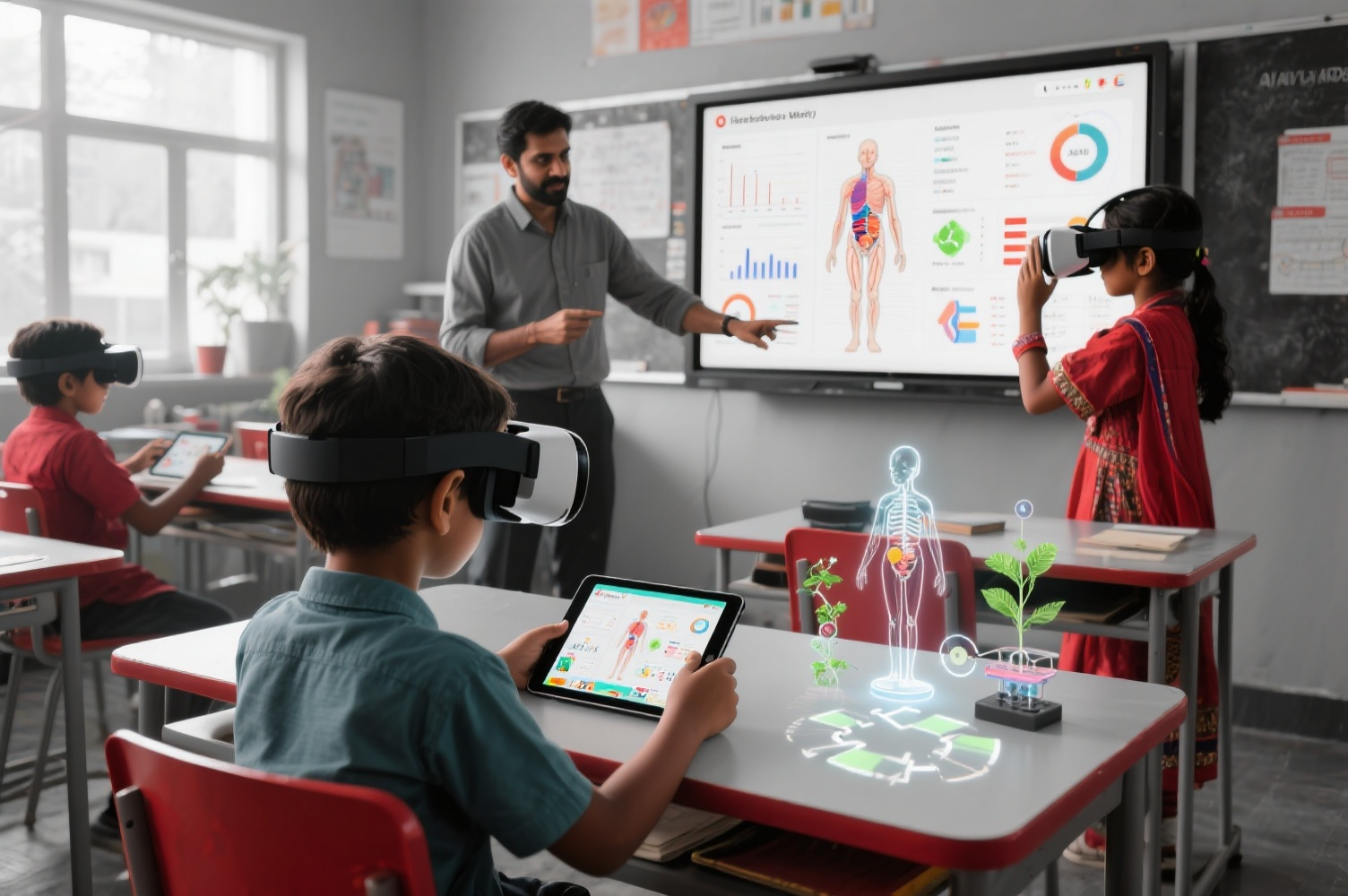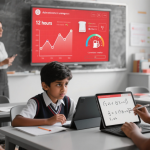- December 9, 2023
- by Educational Initiatives
- Blog
- 0 Comments
The article appeared in Education Times on 30th November 2020
Technology plays a pivotal role in education, as it ushers in achieving significant improvements in both the teaching and learning process. Today, there are innovative techniques that combine classrooms with digital learning tools that help in increasing the student’s engagement through a personalised learning approach. Artificial intelligence (AI) and machine learning (ML) have become an integral part of the teaching process that enable the student to learn with understanding. Educators are increasingly using technologies such as AI, ML, augmented reality (AR), virtual reality (VR) and gamification to increase the level of interest in the students and ensure maximum retention.
Virtual teaching assistants: AI and ML have enabled various learning capabilities such as digital classrooms, cloud-based content, e-books, virtual facilitators, interactive learning platforms and online assessments. AI-based learning solutions are dynamic and data-driven, which lead to an increase in prospects for better engagement among students. The technology can be used to develop adaptive learning methodologies through personalisation, identification and improve learning gaps specific to each student. This can also help students learn at their own pace to ensure that they are learning and grasping the topics being covered at each stage. AI will enable students to have virtual mentors and teaching assistants, which gives the teacher an added support system and keeps the student engaged at all times. Additionally, AI can be leveraged to create Smart Learning platforms with 3-D gaming, computer animation and realistic virtual characters conducting social interactions to build and maintain the interest among students.
Engaging for students with gamification: Gamification in learning helps to keep the student’s interest level high and captures their attention through game-like simulations and learning platforms. The idea of moving from one level to another keeps the student engaged and helps teachers know their progress. Understanding the weaknesses of the student, they can modify the process of teaching.
Data-driven technologies: Content analytics is another aspect of data-driven technology that is used in learning, which has garnered a lot of interest amongst educational practitioners. Content analytics allows the teachers to access data and analyse the learning process of their students. Based on the learnings they can personalise the teaching techniques that will enable them to address the learning gaps and seamlessly guide the students to make progress.
Go beyond imagination with AR and VR: These technologies have helped students through interactive-learning approach with animations, images, videos and similar other content. These digital tools help to create an immersive environment for the students, which they can interact with and are much more experiential with a two-dimensional way of presenting the learning material than traditional pedagogy by reading topics in textbooks. This is helpful, especially in subjects such as science wherein the topic discussed in the classroom is showcased through animation or immersive simulations with AR and VR so that the students can understand what they are learning. For instance, it allows the student to go beyond their imagination and explore anatomy without even picking a scalpel since technology enables them to view what’s inside the body. Another example is the process of photosynthesis or the water cycle, which can be shown more appealingly for students through these technologies that will, in turn, keep their interest level high and help them understand better.



